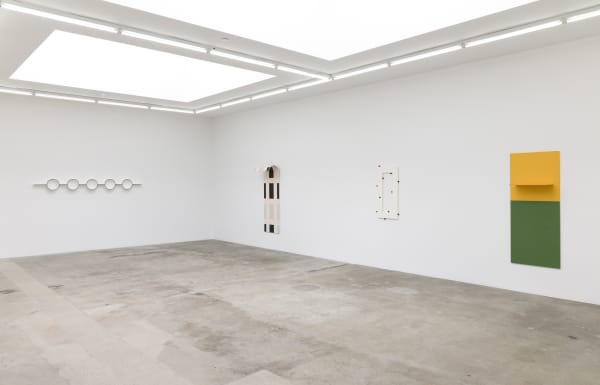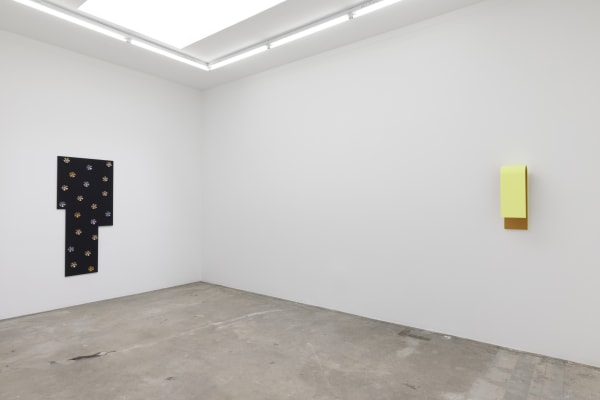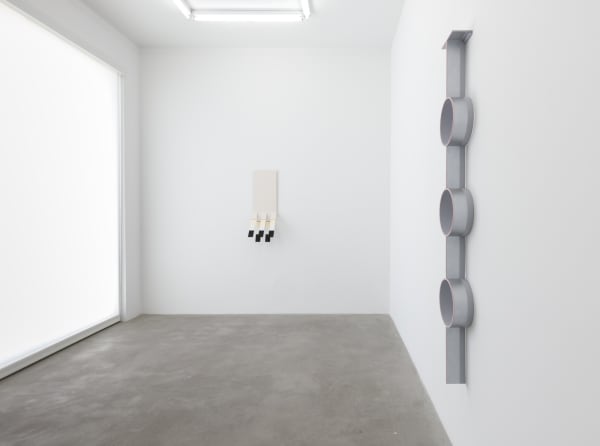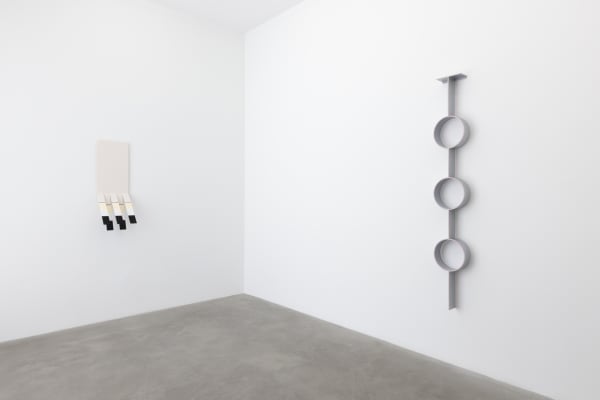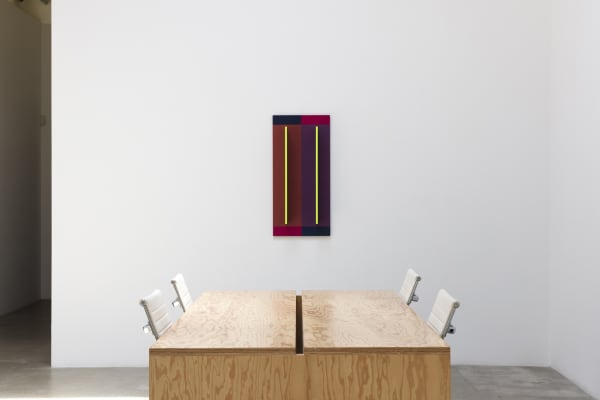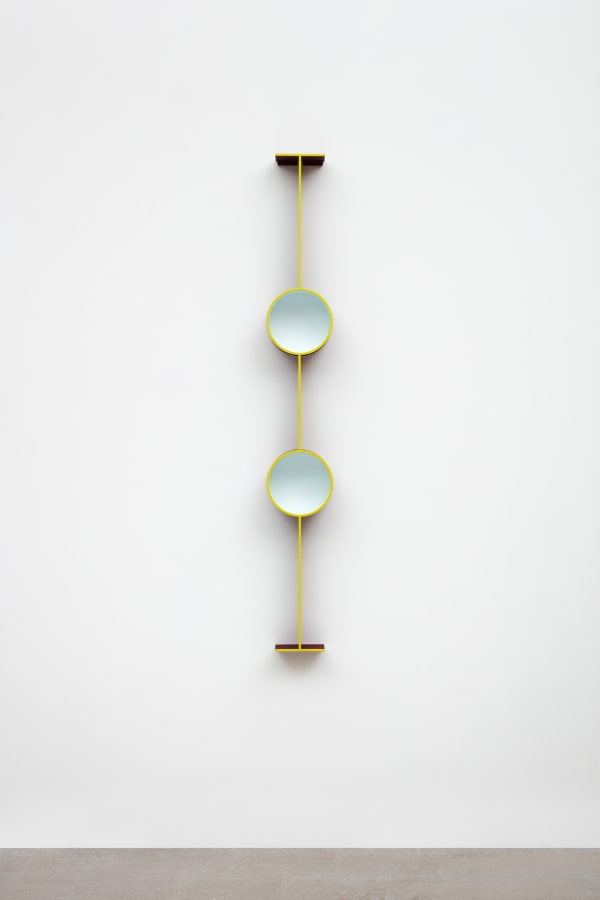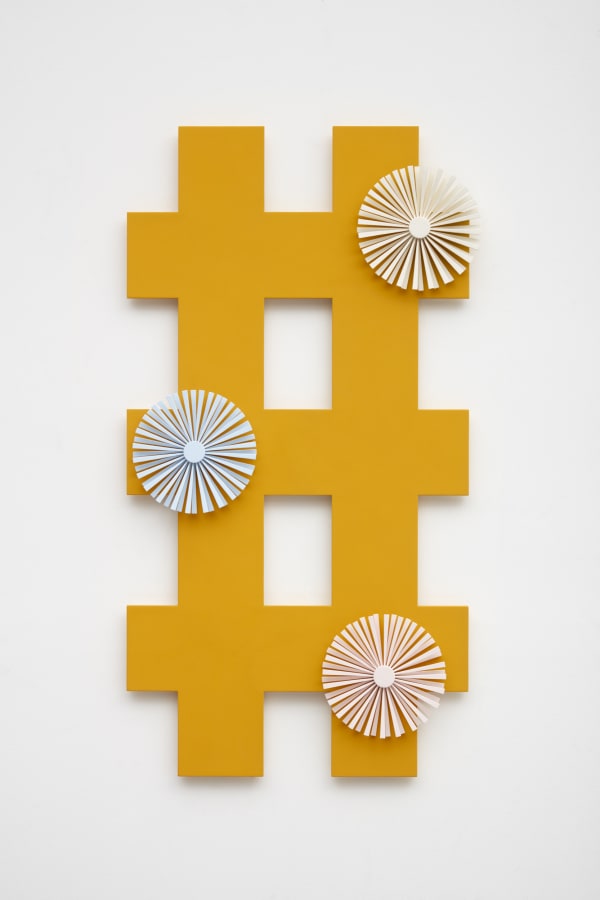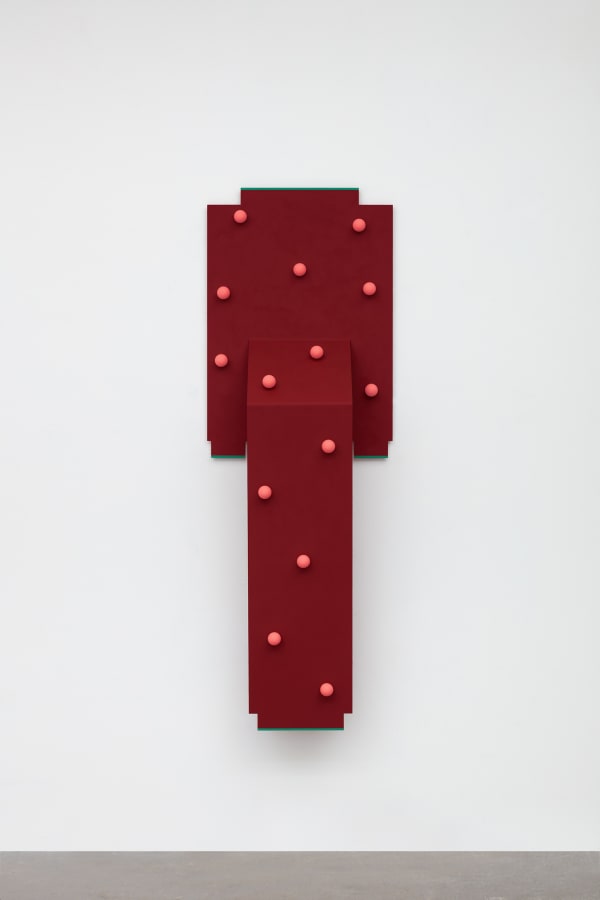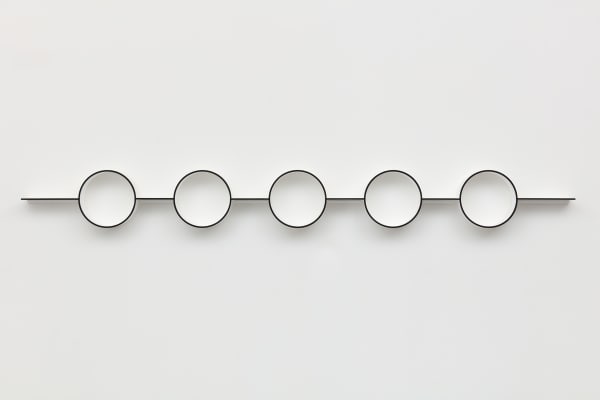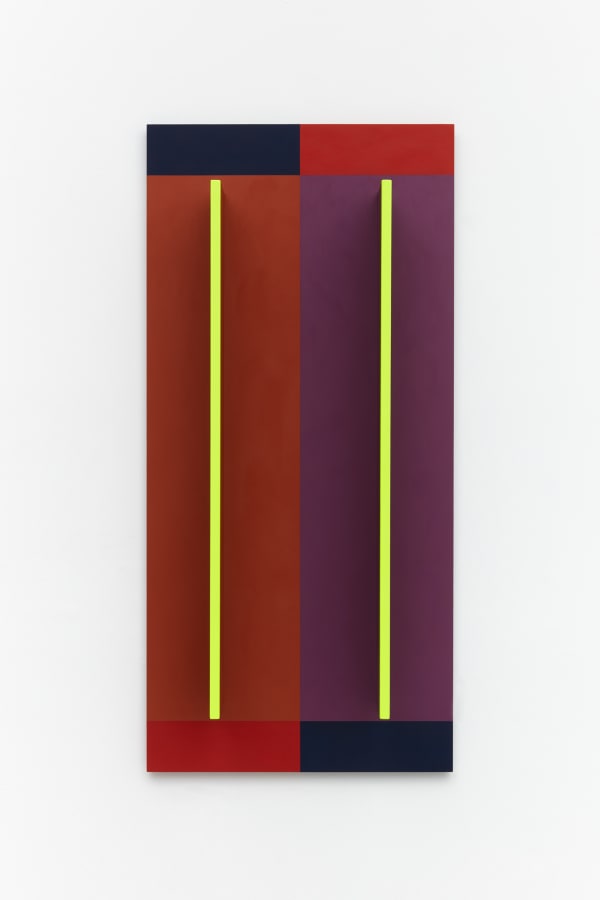Lisa Williamson: Amplifier: Tanya Bonakdar Gallery, Los Angeles
Tanya Bonakdar Gallery is pleased to present Lisa Williamson, Amplifier, on view at our Los Angeles gallery from June 5 through July 17, 2021. This is the artist’s first solo exhibition with the gallery.
For the last decade, Lisa Williamson has investigated the formal considerations of sculpture to create works that are visually precise, physically resonant, and attuned to the spaces in which they are exhibited. The artist’s practice follows a logic that is associative by nature; compressing internal experience into forms that are at once tangible and resistant. Regarding precision as an expressive gesture and calibration as a mode of production, the artist’s expansive approach to color and meticulous attention to surface softens the line between abstraction and figuration, painting and sculpture, language and object.
For this exhibition, Williamson brings together a series of wall-based works that compress landscape and portraiture, architecture and time. Amplified by the past year of quarantine, the artist conveys space as both intimate and concrete, exploring autobiography and its limitations through the guise of abstraction. Over time, Williamson has developed a method of production in which the structural integrity of materials like steel and aluminum are circumvented by delicate yet densely hand-painted surfaces. Delving into the nuance of color while building a concentrated surface, Williamson achieves a material autonomy that is distinct. She often describes this process as tuning, as there is a particular resonance, pacing, and syncopation of forms that comes to mind. Regarding the gallery as an envelope, a container for individual and collective abstraction, Williamson’s sensitivity towards the demarcation of space becomes all the more evident.
Central to the exhibition is a series of reliefs based on the measurements of the artist and her young son. Anchored in abstraction, these works are succinct and expressive. They are portraits yet depart from overt figuration, relating as much to the architecture of a domestic setting or the distillation of a pastoral scene as to the body itself. Working in this direct, one-to-one scale provided Williamson with a footing in the studio, “a more literal and reflective ground to stand on.” While related to previous series, including her recent Body Boards, Williamson’s interest in how to locate and impress the charge of a person, the energetic transference from human to object (like that of a painting or sculpture) is underscored. These works convey both the intimacy and the opacity of individuals, and the impenetrable singularity that exists even as we relate to one another.
This conflation between intimacy and opacity is evident in the modestly scaled work Primo, 2021. Translated from Italian to English to mean “first”, the word is a play on the artist’s son’s name as well as a poetic confirmation. A tender portrait, the sculpture is 38 inches tall and resembles a small ochre ladder or trellis in which three pastel flowers are set in full bloom. In contrast, Level, 2021 is a resolutely spare work that measures 64 inches tall, the same height as the artist. With a vertical field of bisected yellow and green, this blunt body is disrupted by a single fluorescent-orange line protruding forward. Akin to a mouth, the work is a deadpan horizon with a steady expression that negates and obstructs any clear read. Garden (Apartment), 2021, conflates the dimensions of the artist and her son within a single work as an expanse of inky blue-black wraps over a notched rectangle, a shape derived from the outline of two bodies. Resembling the floor plan of an interior, like that of an apartment, its midnight surface is punctuated by a series of “satellite blooms” painted in warm and cool metallic hues. The work evokes the sensation of looking out while remaining within, a perceptual collapsing of distance.
Situated amongst Williamson’s body-scale reliefs are a series of four Time sculptures. In these works, the artist observes and records time spatially, as a phenomenon that is physical, incremental, and progressive. The lengths of the sculptures are 5 feet, 6 feet, 7 feet, and 8 feet respectively, and each links a series of cylindrical shells that correlate in number as the span of the work increases. In this series, Williamson denotes time with a measured cadence. This is exemplified by the sculpture Time (Spectacle), 2021, a work that hangs vertically and resembles a pair of dark glasses. A saturated abstraction, the work frames the act of looking, capturing the spectacle itself as time passes. In contrast, is Time (Horizon), 2021, a vast sculpture comprised of five cylinders that extend horizontally. Painted white with the exception of a velvet black trim at its face, the sculpture seems to float within the gallery. Notably the only horizontal work in the exhibition, this form departs from the verticality of the body and instead connotes time as an expansive meditation, a continuous line hovering in space.
Born in 1977, Lisa Williamson lives and works in Los Angeles, California. She graduated with a MFA from the University of Southern California, Los Angeles (2008) and received her BFA from Arizona State University, Tempe (1999).
Williamson’s work has been included in important group exhibitions including the 2010 California Biennial, Orange County Museum of Art, Newport Beach, CA (2010); Made in L.A., Hammer Museum, Los Angeles, CA (2012); Variations: Conversations In and Around Abstract Painting, Los Angeles Contemporary Museum of Art, CA (2014); PROSPECT 2017, Museum of Contemporary Art San Diego, CA (2017). In 2009 the artist completed a residency at CCA Andratx in Mallorca, Spain. Williamson was the recipient of the 2007 LA Studios, Inc. Sound Award as well as the University Teaching Fellowship at University of Southern California, Los Angeles. The artist also received the CAAP Grant in Chicago in 2001 and 2002.
All installation images above: Photo by Jeff McLane
-
 Lisa Williamson, Time (Spectacle), 2021
Lisa Williamson, Time (Spectacle), 2021 -
 Lisa Williamson, Primo, 2021
Lisa Williamson, Primo, 2021 -
 Lisa Williamson, Silhouette (Orbs), 2021
Lisa Williamson, Silhouette (Orbs), 2021 -
 Lisa Williamson, Time (Horizon), 2021
Lisa Williamson, Time (Horizon), 2021 -
 Lisa Williamson, Blink, 2021
Lisa Williamson, Blink, 2021 -
 Lisa Williamson, Transmission, 2021
Lisa Williamson, Transmission, 2021 -
 Lisa Williamson, Level, 2021
Lisa Williamson, Level, 2021 -
 Lisa Williamson, Time (Tree), 2021
Lisa Williamson, Time (Tree), 2021 -
 Lisa Williamson, Garden (Apartment), 2021
Lisa Williamson, Garden (Apartment), 2021 -
 Lisa Williamson, Gleam, 2021
Lisa Williamson, Gleam, 2021 -
 Lisa Williamson, Toner, 2021
Lisa Williamson, Toner, 2021 -
 Lisa Williamson, Time (Ellipsis), 2021
Lisa Williamson, Time (Ellipsis), 2021 -
 Lisa Williamson, Blocker, 2021
Lisa Williamson, Blocker, 2021


